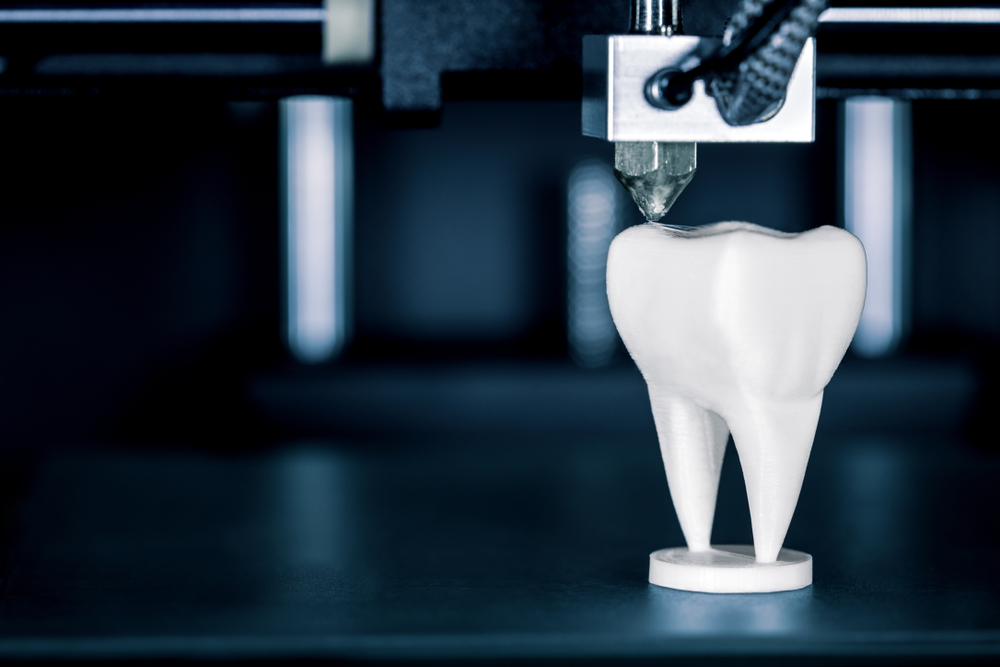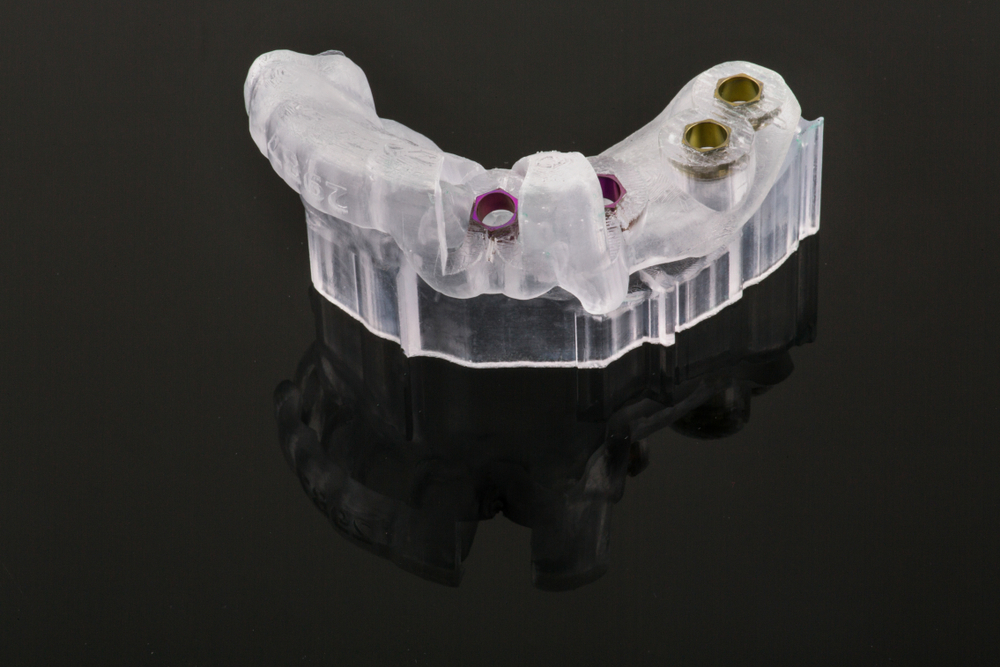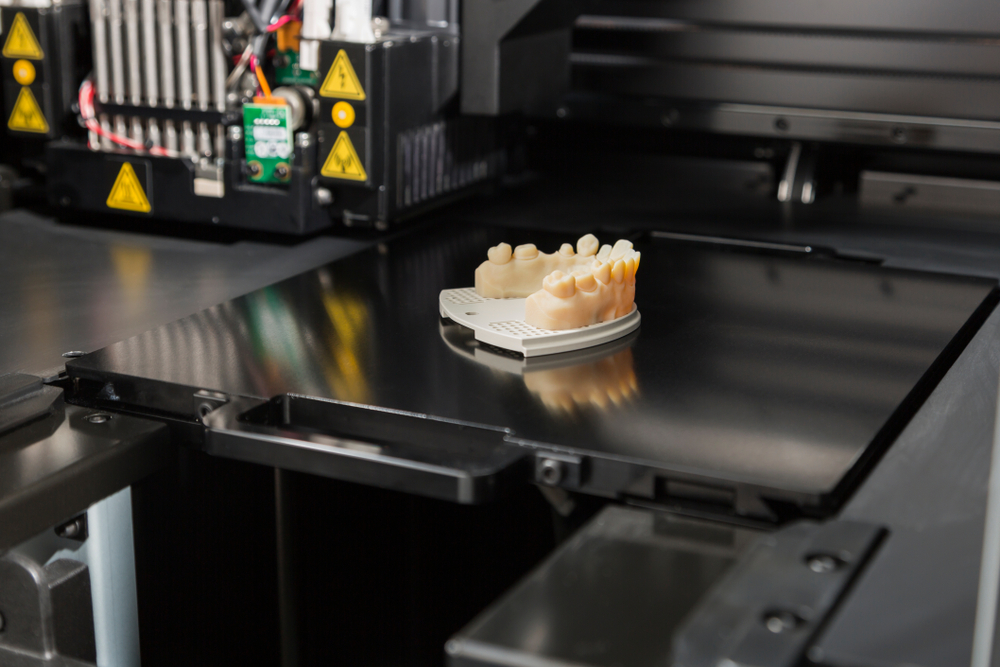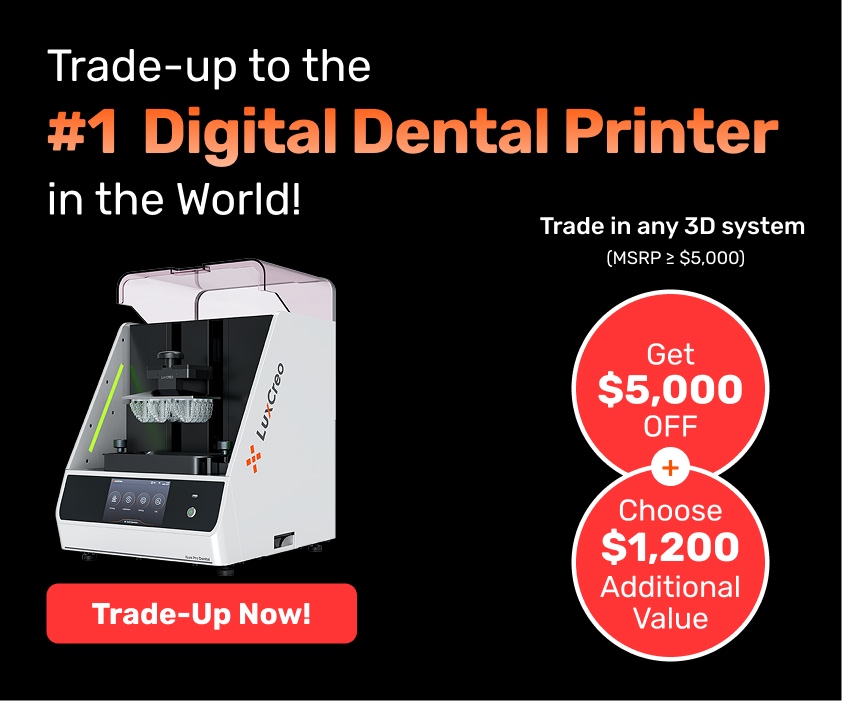
The Future of 3D Printing in Dentistry Services
Introduced three decades ago, 3D printing is transforming dentistry. The market for 3D-printed dental products is expected to reach $930 million by the end of 2025, driven by greater commercialization of printing systems, the need to customize dental products, and the availability of contract 3D printing services.
Dental products are customized and time-consuming and expensive to produce. With on-demand 3D printing services, dentists experience faster turnaround time on dental products, such as retainers and night guards, than traditional fabrication methods. 3D printing in dentistry continues to improve with better production processes and a greater range of materials, increasing the number of service offerings.

The Present and Future of 3D Printing in Dentistry
3D printing can easily create patient-specific products with little to no post-processing. Multiple dental products can also be printed on a single machine. With greater flexibility and more efficient processes, 3D printing will become the dominant dental production technology in the future.
3D Printing Dental Applications
3D printing is used to produce a number of dental products and aid various dental procedures. Here are some examples:
- Restorative dental implants. Also known as “digital dentures,” crowns and replacement teeth are accurately produced with 3D printing. With the on-demand production of prosthetics, patients do not have to wait long for restorative implants and can expect a better product fit.
- Personal protective equipment (PPE). With strained supplies of PPE, the industry is rapidly adapting to 3D printing to produce face shields and other surgical accessories.
- Night guards and retainers. 3D printing night guards and retainers eliminates the thermoforming and trimming steps, reducing labor and time to develop a customized product.
- Surgical guides. FDA-compliant and more accurate oral surgical guides, such as tooth-borne, mucosal-borne, and bone-borne, can be 3D printed with rapid turnaround times and minimal material cost.

3D Printing Innovation in Dental
Innovation in 3D printing processes and systems is driving change in the dental industry.
- More advanced materials. Research in new 3D-printable materials will produce dental products that are stronger and more durable than ones manufactured with traditional materials, such as porcelain, while still being biocompatible.
- Broader applications and products. With more advanced materials, the quality and number of applications for 3D-printable dental products will expand. 3D-printed implantable teeth can eventually be easily manufactured to match a patient’s original teeth as well as improve the long-term biocompatibility.
- Greater accessibility. 3D printing is becoming widely available and the dominant manufacturing process for dental products. With greater flexibility, 3D printing is enabling a high mix of dental products to be made on-demand and more cost-effectively.
Why Use 3D-Printed Dental Products?
The flexibility of 3D printing systems makes it easier to produce customized products like dental night guards, retainers, prosthetics. The major advantages of 3D-printed dental products are:
- Customization without thermoforming and trimming. Dentists don’t need to create a mold for thermoforming and trimming. Instead, mouth scanners are used to create a digital model, and then the final product is directly printed.
- Reduced waste. 3D printing eliminates the need for a throwaway thermoforming mold and material lost during the grinding and buffing steps. Material waste is reduced by up to 80% with additive manufacturing.
- Competitive materials. 3D printed products are competitive with products made with traditional materials, such as thermoformed acrylics, epoxies, and ceramics, in terms of strength, color, durability, and value.
- Quick turnaround. By eliminating the thermoforming and trimming steps, the final 3D printed product can be quickly printed and shipped with almost no labor.
Reducing material waste, eliminating post-processing steps, and improving materials translate into higher quality 3D products that are also cost-competitive with dental products manufactured with traditional methods and materials. Today’s advanced 3D printing technology can directly print a transparent product, eliminating the grinding and buffing required with older 3D-printed dental products.

3D Print Dental Products with the Right Manufacturing Partner
Most dentists do not have 3D printers in their offices. With, on-demand 3D printing services, dentists can quickly order custom 3D-printed dental products without having to buy equipment that sits inactively between orders.
If you’re ready to experience the future of 3D printing in dentistry, LuxCreo offers an easy way to make production dental products on-demand. As an FDA-approved 3D printing service for night guards and retainers, LuxCreo can help you get dental products into production with a cloud-connected smart factory. You can print and ship customized products to your office or directly to patients.
To learn more about our processes and services for 3D printing at scale, visit our contact page or call (650) 336-0888.

